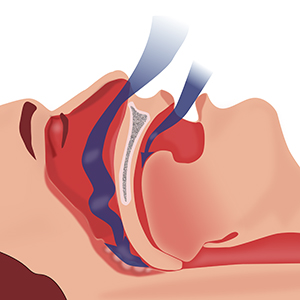Pulmonary rehabilitation: A novel adjunct in management of obstructive sleep apnea

Submitted: March 9, 2022
Accepted: June 10, 2022
Published: June 20, 2022
Accepted: June 10, 2022
Abstract Views: 1426
PDF: 563
Publisher's note
All claims expressed in this article are solely those of the authors and do not necessarily represent those of their affiliated organizations, or those of the publisher, the editors and the reviewers. Any product that may be evaluated in this article or claim that may be made by its manufacturer is not guaranteed or endorsed by the publisher.
All claims expressed in this article are solely those of the authors and do not necessarily represent those of their affiliated organizations, or those of the publisher, the editors and the reviewers. Any product that may be evaluated in this article or claim that may be made by its manufacturer is not guaranteed or endorsed by the publisher.
Similar Articles
- Ganesh Narwade, Manu Madan, Rohit Kumar, Pranav Ish, AJ Mahendran, Rajnish Kaushik, Nitesh Gupta, Clinical characteristics of non-sleepy obstructive sleep apnea patients: a study in a tertiary care sleep clinic in India , Monaldi Archives for Chest Disease: Early Access
- O. Marrone, A. Salvaggio, M. Gioia, A. Bonanno, M. Profita, L. Riccobono, A. Zito, G. Insalaco, M.R. Bonsignore, Reticulocytes in untreated Obstructive Sleep Apnoea , Monaldi Archives for Chest Disease: Vol. 69 No. 3 (2008): Pulmonary series
- Saroj Kumari Meena, Rajnish Gupta, Manmohan Puri, Existence and pattern of sleep-related breathing disorders in patients diagnosed with bronchial asthma , Monaldi Archives for Chest Disease: Early Access
- Maria Teresa La Rovere, Francesco Fanfulla, Oreste Febo, Obstructive sleep apnea: one more target in cardiac rehabilitation , Monaldi Archives for Chest Disease: Vol. 82 No. 3 (2014): Cardiac series
- S. Ricotti, P. Vitulo, L. Petrucci, T. Oggionni, C. Klersy, Determinants of quality of life after lung transplant: an Italian collaborative study , Monaldi Archives for Chest Disease: Vol. 65 No. 1 (2006): Pulmonary series
- Anshul Mittal, Pranav Ish, Vidushi Rathi, Satish Kumar Kumawat, Shibdas Chakrabarti, JC Suri, Rehabilitation in obstructive sleep apnea: an ignored treatment adjunct , Monaldi Archives for Chest Disease: Early Access
- Abhijeet Singh, Rajendra Prasad, Rajiv Garg, Surya Kant, Giridhar B. Hosmane, Abhisek Dubey, Abhisek Agarwal, Ram Kishun Verma, A study to estimate prevalence and risk factors of Obstructive Sleep Apnoea Syndrome in a semi-urban Indian population , Monaldi Archives for Chest Disease: Vol. 87 No. 1 (2017)
- Elena Sogaro, Francesca Schininà , Costanza Burgisser, Francesco Orso, Rachele Pallante, Teresa Aloi, Duccio Vanni, Adolfo Pazzagli, Francesco Fattirolli, Type D personality impairs Quality of Life, coping and short-term psychological outcome in patients attending an outpatient intensive program of cardiac rehabilitation , Monaldi Archives for Chest Disease: Vol. 74 No. 4 (2010): Cardiac series
- R. Sabato, P. Guido, F.G. Salerno, O. Resta, A. Spanevello, M.P. Foschino Barbaro, Airway inflammation in patients affected by obstructive sleep apnea , Monaldi Archives for Chest Disease: Vol. 65 No. 2 (2006): Pulmonary series
- Mahismita Patro, Nipun Malhotra, Dipti Gothi, Rahul Kumar, Ganjam Yasasvini, Diagnostic accuracy of daytime polysomnography: a reappraisal during the COVID-19 era , Monaldi Archives for Chest Disease: Early Access
You may also start an advanced similarity search for this article.

 https://doi.org/10.4081/monaldi.2022.2260
https://doi.org/10.4081/monaldi.2022.2260





